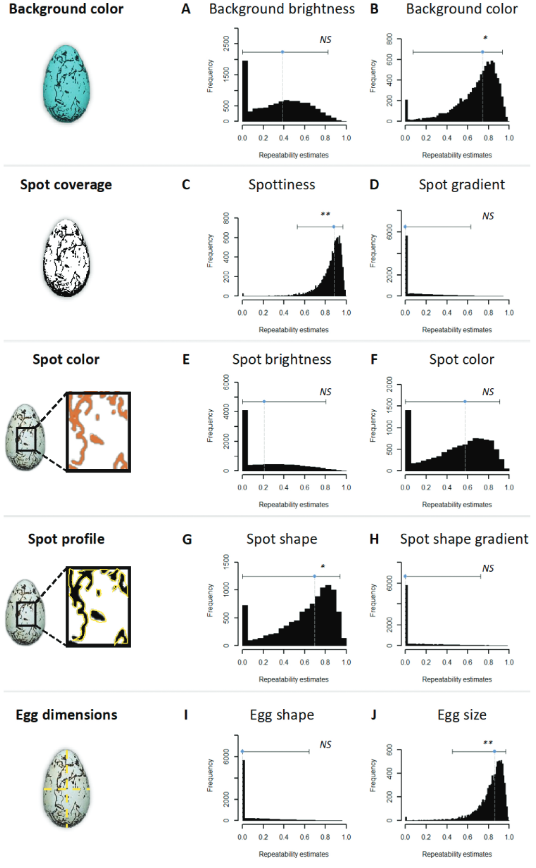 Individual murres lay eggs year after year that have similar background colors and sizes, which may help them identify their own egg amongst a crowded colony.
Individual murres lay eggs year after year that have similar background colors and sizes, which may help them identify their own egg amongst a crowded colony.
Interannual repeatability of eggshell phenotype in individual female Common Murres (Uria aalge)
Abstract
The recognition of own progeny is critical in group-living organisms that provide parental care for their young. Thecolonial seabird Common Murre (Uria aalge(Pontoppidan, 1763); also known as the Common Guillemot) does not build a nest, sodirect cues must be available for the parents to recognize their own egg. However, only anecdotal evidence exists that, as seenin other avian lineages where examined, eggshells of Common Murres are also consistent in most aspects of their appearancebetween different breeding attempts by each female. Using digital photography, we quantified several eggshell traits of ahandful of captive Common Murres across multiple years. Individual female Common Murre eggs were significantly repeatablein background colour, maculation coverage, spot shape, and shell size. Laying individually consistent and recognizable eggshellsacross breeding attempts may benefit Common Murres by reducing both the cost of relearning and the risk of misidentifyingtheir own eggs. More generally, these data also add to the growing knowledge of individually consistent eggshell genesis by theavian reproductive system
Contribution: Statistical analyses, Table 1 and Figure 3